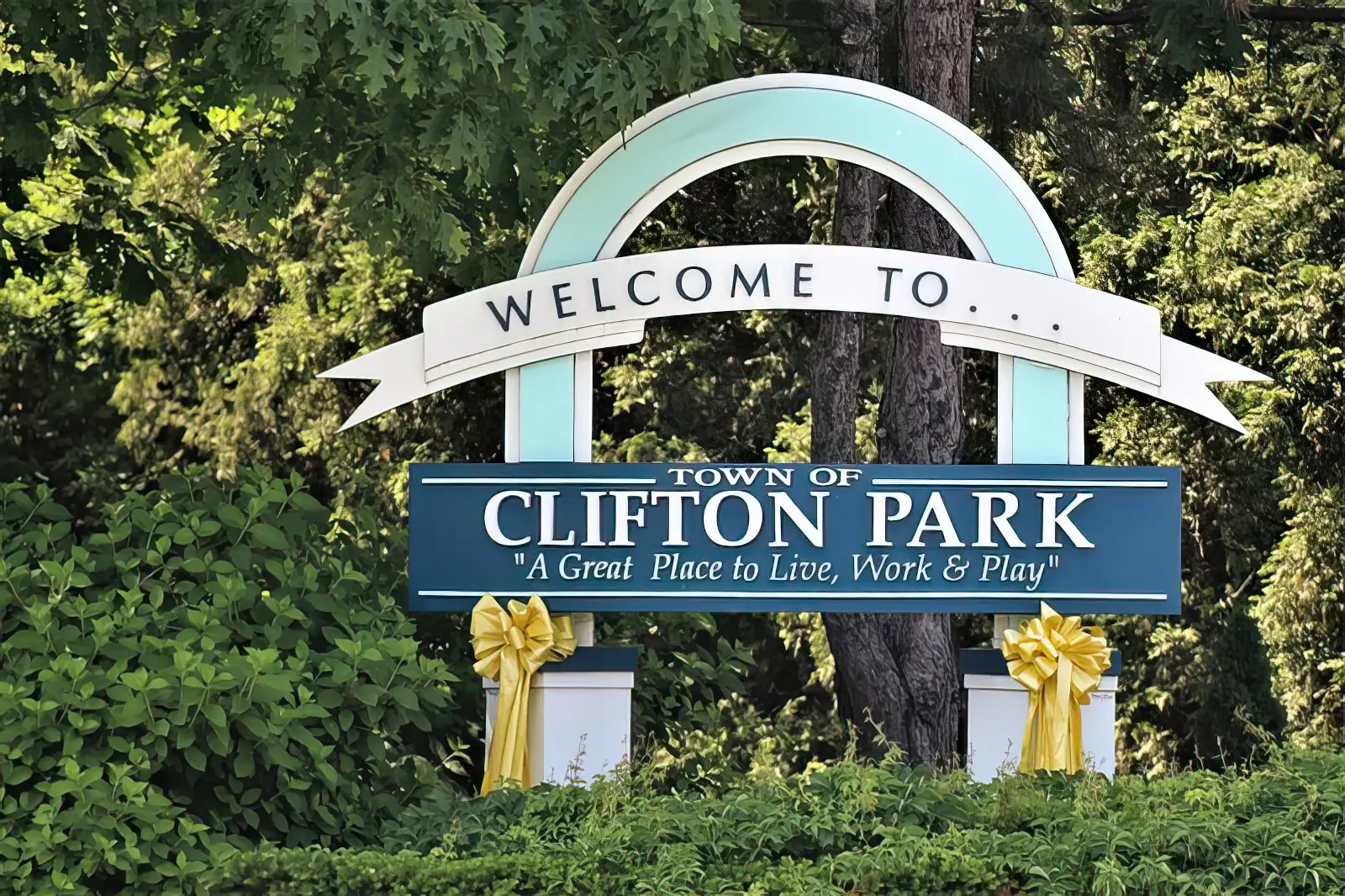
Clifton Park
The Town of Clifton Park dates back to the 1660s when settlers moved north from Albany and Schenectady to establish farms along the Mohawk River. Once part of Halfmoon, named after the ship with which Henry Hudson first plied the Hudson River in 1609. Clifton Park became independent in 1828 when it split from Halfmoon and retained the name of the 1708 Clifton Park Land Patent. When the Erie Canal opened in 1825, it bolstered commerce in the region. Yet, Clifton Park largely remained an agricultural town powered by farming, ice harvesting, apple harvesting, sawmills, and grist mills until the mid-1900s. Today, the town center of Clifton Park is filled with businesses, restaurants, and other services, surrounded by the serene historic area around Vischer Ferry, which time graciously appears to have left behind.

Cohoes / Waterford
Tucked together at one end of the Mohawk Towpath Scenic Byway, Cohoes (Native American for falling canoe) is one of the earliest towns in the region, built on land purchased by the Dutch West India Company from local Native Americans in 1630. Inexpensive waterpower brought in manufacturing, powering growth from 150 residents in 1840 to 4,229 in 1850. By 1870, the town had grown to 15,357 residents who primarily worked at six large cotton mills. Neighboring Waterford, where Henry Hudson’s ship was stopped by the riffs in 1609, is the oldest incorporated village in New York State. Quaint, narrow, colonial tree-lined streets are home to Federal-style brick buildings with Waterford gables alongside Greek Revival and Victorian structures. Remnants of the Original Erie Canal, the Champlain Canal, and the New York State Barge Canal can all be found at this one location.

Schenectady
The original settlement of 12 homes built on present Ferry, Front, State Streets, and Washington Avenue, named "Schau-naugh-ta-da" (Native American for "over the pine plains"), was nearly wiped out in 1690 during King William’s War. Recognized 300 years after its founding, the Stockade District is still surrounded by the stockade constructed in 1692 to prevent further destruction. Pre-Revolutionary houses in Dutch Colonial style with steeply pitched gable ends facing the street still stand proudly in what the National Park Service regards as the densest collection of period homes in the United States. The Erie Canal was constructed on what is now Erie Boulevard. Founded in 1795, Union College was the second college chartered in New York State. Thomas Edison moved the Edison Machine Works to Schenectady in 1887, and in 1892, the c became the headquarters of the General Electric Company. Today, Union College, the first architecturally designed campus, occupies a prominent place in the center of Schenectady, filled with impeccably preserved historic buildings.

Colonie / Latham
Once part of the Rensselaerswyck Manor, one of the early Dutch large landholdings, Colonie took its name from the Dutch word Colonye, which originally referred to all the land outside the Village of Beverwyck (now Albany). Once the location of Shaker farms, the Watervliet Shaker Historic District is now located in the center of town. The hamlet of Latham, located in the Town of Colonie, was built on land once occupied by the Mohicans. It was known as Yearsley’s in 1829, Van Vranken’s in 1851, Town House Corners in 1860, and ultimately Latham’s Corners for the Latham family, who owned a hotel here until 1933. The corner referred to is the intersection of the Troy-Schenectady Road and Old Loudon Road, built in 1755 during the French and Indian War to move troops and provisions from Albany to Ticonderoga, the location of an important battle.

Glenville / Scotia
The township of Glenville was settled on land granted to Scotsman Alexander Lindsay Glen in 1665. His original residence, now a portion of a luxury hotel, still stands in the village of Scotia, named in honor of his native Scotland. In the early years, farms growing corn to make brooms stretched along the Mohawk River, almost to Amsterdam, while other farms produced an abundance of grains, hay, straw, potatoes, fruit, and garden vegetables for the nearby City of Schenectady. The many historic homes in the area include the Greek Revival Seeley Farmhouse, also known as Little Richard’s Tavern, which dates from 1850; the Swart House and Tavern, constructed in 1750 and enlarged in 1792; and the Glenville District No. 5 Schoolhouse, known as the Green Corners School, built in 1825. Three railroad lines originally crisscrossed the town, supporting commerce and trade.
